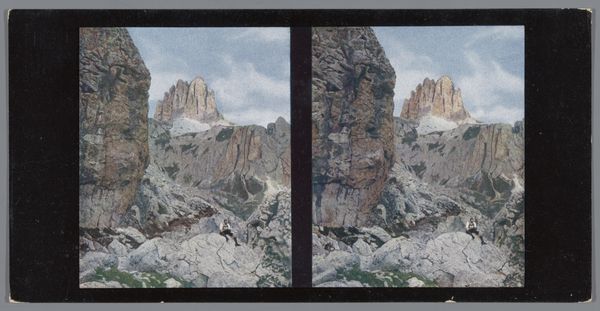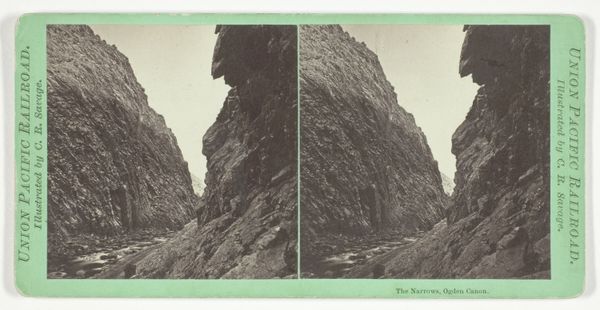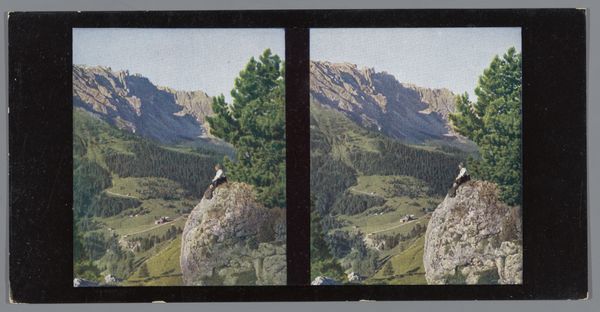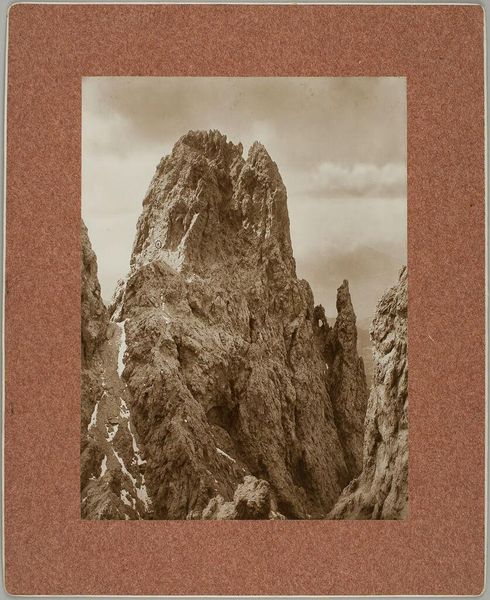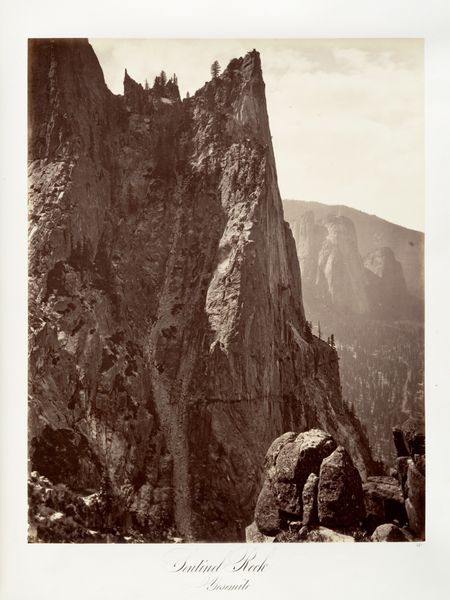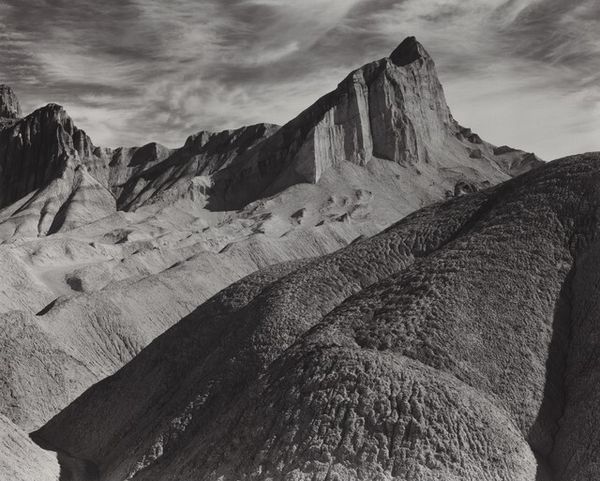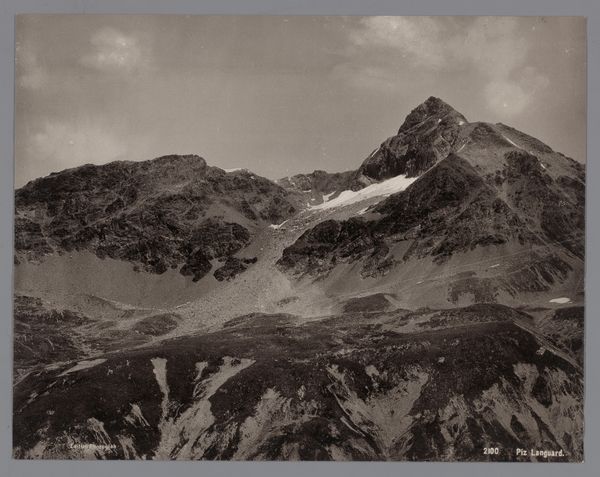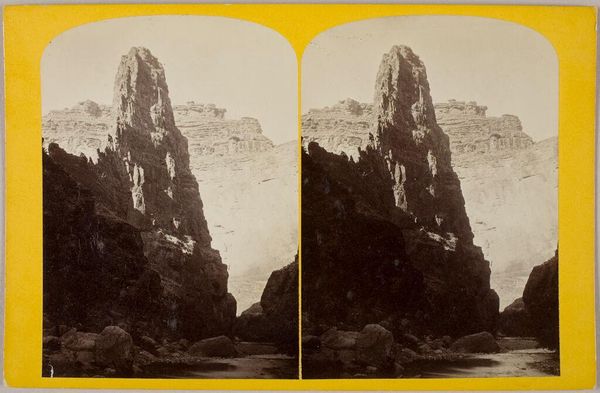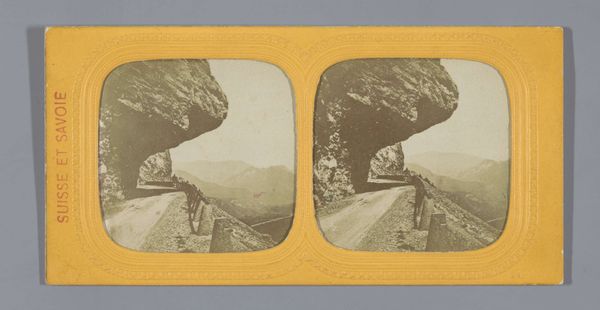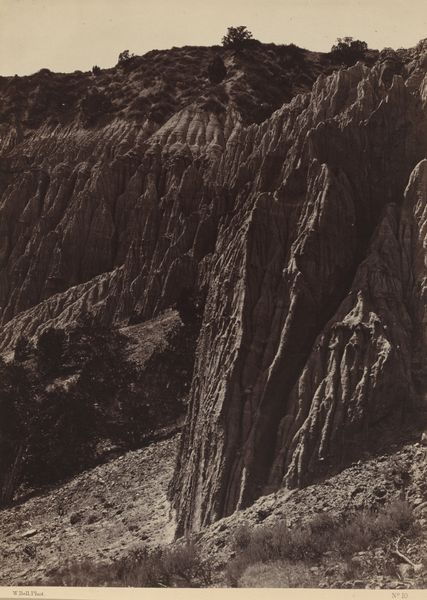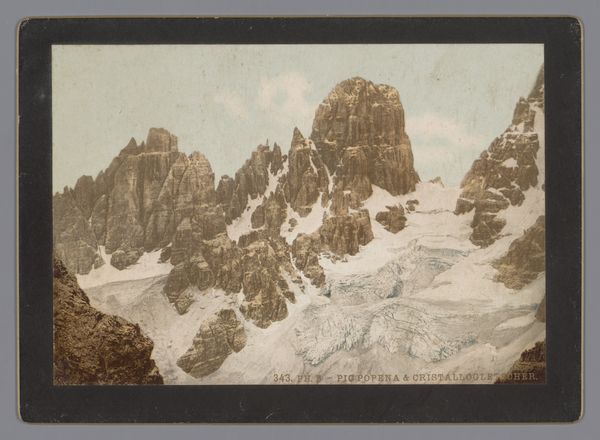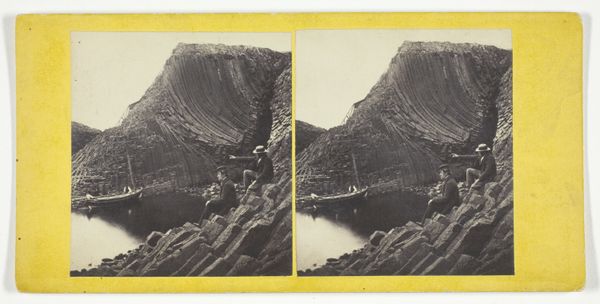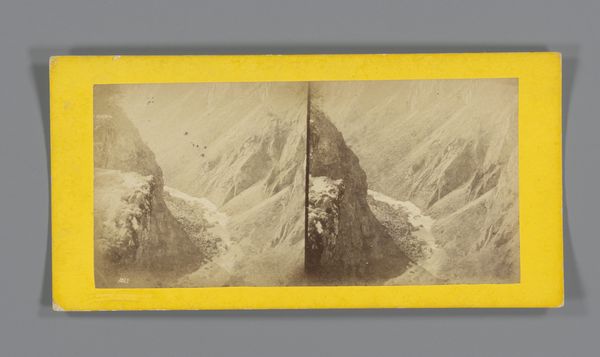
photography
#
landscape
#
photography
#
mountain
Dimensions: height 85 mm, width 170 mm
Copyright: Rijks Museum: Open Domain
Curator: This stereoscopic image, attributed to Hans Hildenbrand before 1908, captures the Vajolet Towers in the Dolomites. It presents a layered approach to depicting landscape photography. Editor: Wow, that hits me like a gothic cathedral made of stone! Stark, dramatic, reaching skyward. Curator: It is fascinating to see this alpine scenery reproduced with a photographic approach to color printing which would have certainly relied on additive techniques using red, green and blue separations. Editor: Knowing it’s stereoscopic—for those old viewers where it pops into 3D—changes everything. All of a sudden those mineral colors, those worn ridges…they become almost tactile. I can feel the air, see the wind cutting. It almost feels as if they're trying to compete against industry—mimicking it through the labor to capture something 'natural'. Curator: Certainly, the laborious color printing techniques underscore how human ingenuity and industry attempted to match, reproduce and indeed to some degree even rival nature's spectacle at a time of immense industrial change. You could see these photographs as products meant for consumption; designed to invoke an understanding of the raw materials they represent. Editor: And consumption both in seeing it reproduced like this or taking the image and experiencing this sublime 'nature' for oneself in reality? Curator: Indeed. I’d agree there's a definite tie in both capturing an image for a distant viewer but also in possibly promoting it as a potential tourist attraction as it increased its appeal and reach for a market hungry for seeing far-off wonders. Editor: It’s humbling and inspiring, knowing that kind of meticulous effort went into crafting a moment. Makes you rethink the throwaway nature of how we consume images today. Curator: It really does highlight, through this stereoscopic technique, how deeply ingrained a material relationship is in what we even term to be high art practices, doesn't it? The means of production—photography, photographic printing, and promotion—very much informed how these alpine landscapes became perceived. Editor: Agreed. What a sharp contrast. That, to me, makes it even more beautiful.
Comments
No comments
Be the first to comment and join the conversation on the ultimate creative platform.
